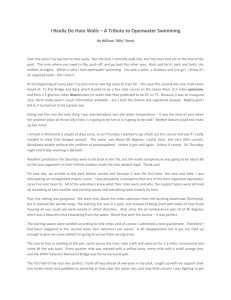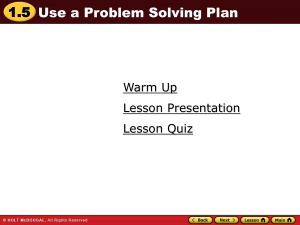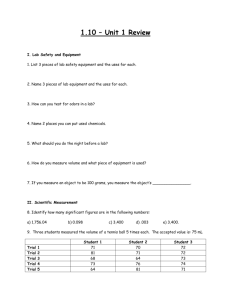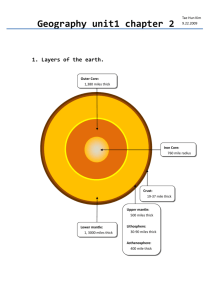Unit analysis means that you include the units of
advertisement
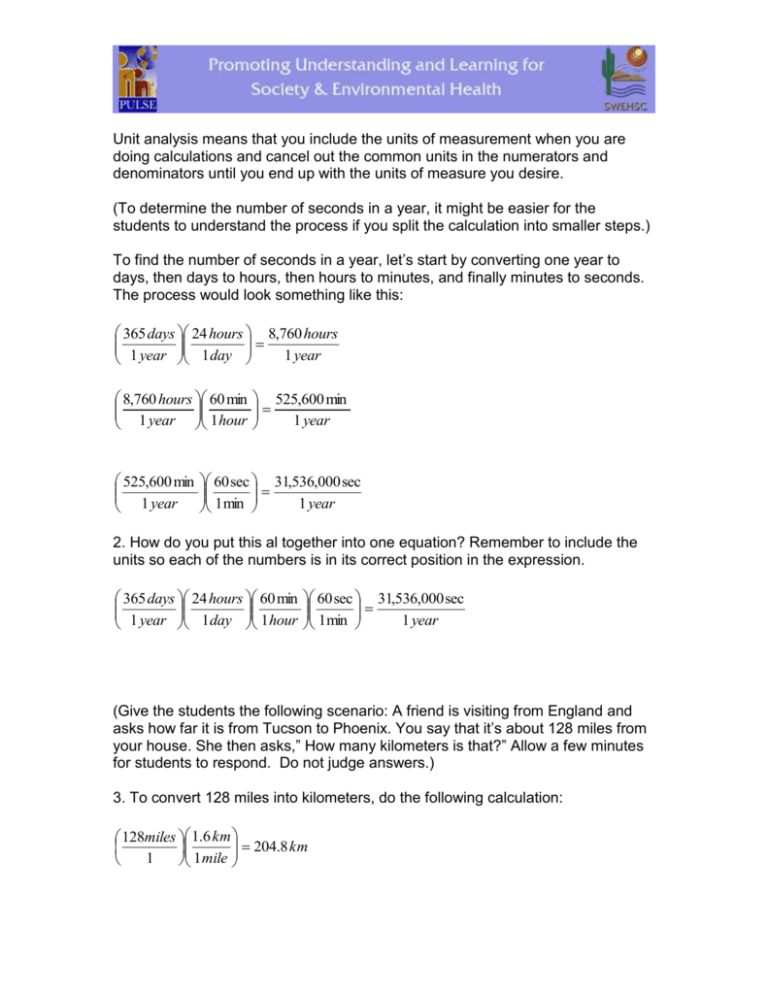
Unit analysis means that you include the units of measurement when you are doing calculations and cancel out the common units in the numerators and denominators until you end up with the units of measure you desire. (To determine the number of seconds in a year, it might be easier for the students to understand the process if you split the calculation into smaller steps.) To find the number of seconds in a year, let’s start by converting one year to days, then days to hours, then hours to minutes, and finally minutes to seconds. The process would look something like this: 365 days 24 hours 8,760 hours 1 year 1 year 1 day 8,760 hours 60 min 1 year 1 hour 525,600 min 1 year 525,600 min 1 year 60 sec 31,536,000 sec 1 min 1 year 2. How do you put this al together into one equation? Remember to include the units so each of the numbers is in its correct position in the expression. 365 days 24 hours 60 min 1 year 1 day 1 hour 60 sec 31,536,000 sec 1 year 1 min (Give the students the following scenario: A friend is visiting from England and asks how far it is from Tucson to Phoenix. You say that it’s about 128 miles from your house. She then asks,” How many kilometers is that?” Allow a few minutes for students to respond. Do not judge answers.) 3. To convert 128 miles into kilometers, do the following calculation: 128miles 1.6 km 204.8 km 1 1 mile The “miles” in the numerator of the first factor is cancelled by the “miles” in the denominator of the second factor leaving kilometers as the final unit of measure for your computation. Ask which problem was more difficult and why. (Point out that the first problem is more difficult because there are so many factors involved, but by canceling out the units they can put the numbers in their correct place in the expression. The second calculation is much easier because there are only two factors involved.) (The rest of the lesson is devoted to changing from empirical units into metric units by using unit analysis. The conversion factors needed are the following 1.6 km = 1 mile .625 mile = 1 km (this is calculated on the activity sheet) 1 sq mile = 2.56 sq km (this is calculated on the activity sheet) 1 sq km = .39 sq miles (this is calculated on the activity sheet) 4. How do you use the fact that approximately 1.6 km = 1 mile to determine how many miles are in one kilometer? 1 mile .625 mile .625 mile 1 or 1.6 km 1.6 km 1 km 1 km 1 mile 5a. Use a conversion factor from problem 4 to determine how many square kilometers are in one square mile? To picture this, draw a square that is 1 mile on each side and then change the 1 mile into 1.6 km 1.6 km 1.6 km 2.56 sq km and find the area of the square or 1 mile 1 mile 1 sq mile 5b. Use a conversion factor from problem 4 to determine how many square miles are in one square kilometer? To picture this, draw a square that is 1 km on each side and then change the 1 km into .6 mile .625 mile .625 mile .39 sq mile and find the area of the square or 1 km 1 km 1 sq km 5c.What is another way to determine how many square miles are in one square kilometer? (Hint: this uses your answer to problem 5a) Take the reciprocal of your answer from question 5a: .39 sq mile 1 2.56 sq km 1 sq km 1 sq mile Multiple choice: For the following problems, calculate the answer that best approximates the given measure. (The correct answers are underlined.) 6. km 4 miles = a. 3 km b. 5 km 7. 80 km = a. 40 miles 8. 120 sq miles = a. 307 sq km b. 250 sq km c. 192 sq km d. 120 sq km b. 50 miles c. 6.4 km c. 60 miles d. 8 d. 70miles 9. A friend of yours is confused and thinks that 12 km is about 19 miles. a. How do you know that he is wrong? You know that 1 km is smaller than 1 mile, so the answer must be smaller than 12 instead of being larger than 12 b. What should he do to get the correct answer? Multiply 12 km by .6 mile/ km to get 7.2 miles

